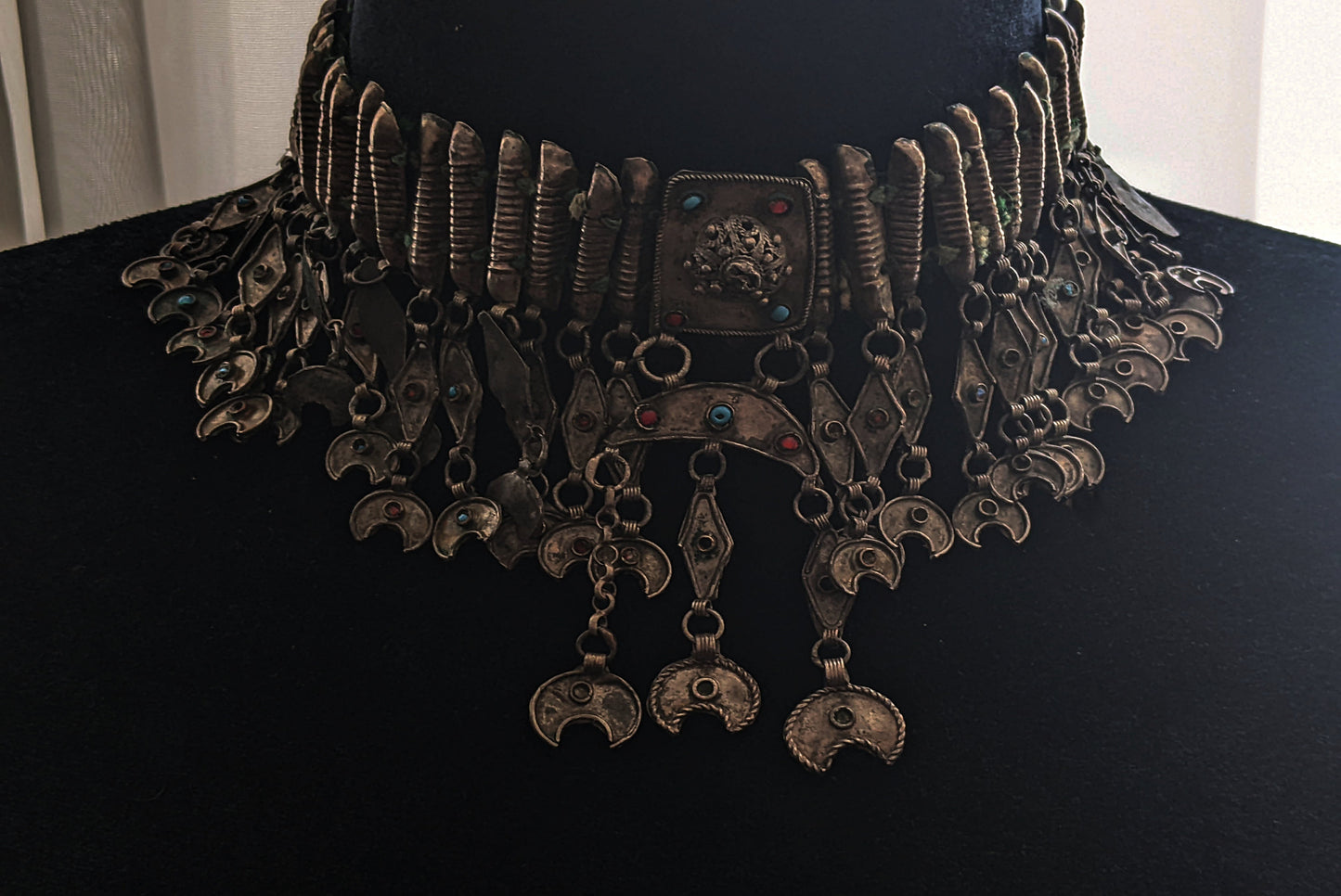Anteeka
Ottoman Era Levant Silver Choker Necklace Kirdan with Blue and Red Beads
Ottoman Era Levant Silver Choker Necklace Kirdan with Blue and Red Beads
Couldn't load pickup availability
This type of necklace called kirdan or gerdanlik was worn across North Africa, Western Asia, and in Eastern Europe. This kirdan, from late 19th - early 20th century, is made with low-grade silver and was most likely worn in the Levant.
The necklace is composed of three tiers. The first is a repousse element that some say is a stylized fish or snake or even a grain, to symbolize fertility and abundance. There is a central plate with red and blue glass beads at the four edges and a filigree dome. From this central plate hangs a crescent pendant and three lozenge and crescent dangles. The blue beads ward away the evil eye while the red beads are associated with health. The second tier is a series of lozenges that may stand in for hands of fatima to protect the wearer. The dangles are crescent shaped and also have red and blue glass beads. The top tier has been sewn on an old velvet band but the closure is much later Velcro sewn at the ends. The metal elements tested positive for low grade silver on a scratch test.
This choker necklace may require restringing and has some missing beads. The threads are noticeably worn and have been repaired in a few areas. There is also some verdigris on the back. One lozenge has been replaced with a short chain, which appears to be an old repair. Overall, the choker is in good condition considering its age. However, there is a slight depression on the center dome. This exquisite piece of jewelry is a must-have for any collector.
- Velvet band is 41 cm (16 1/4") long and 2 cm (7/8") wide.
- The depth is 9.5 (3 3/4") in the middle
- Weight is 94 g.
Share
















